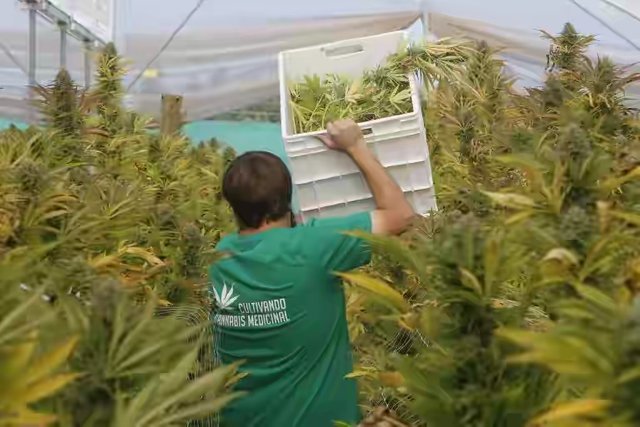Green Gold: How China Grows to Superpower

Cannabis has been cultivated in China for centuries, especially for its fiber that can be turned into rope, cloth and paper. Fabrics of hemp fibers over 3,400 years old have been found in the tomb of the Shang Dynasty in Hebei.
The fiber is believed to be the basis of the earliest paper form created in the country. While other plant parts, such as seeds and leaves, have been used in traditional Chinese medicine.
There are no official figures for the number of factories growing in China each year, but marijuana plantations have experienced very significant growth over the last decade in China, both for commercial and other uses. This rapid growth is possible because of the use of marijuana for research. Government-funded scientists study the use of marijuana for military needs, including as medicine and cloth for uniforms.

According to the World Intellectual Property Organization, research on marijuana actually took off in China in the late 1970s when the Chinese state waged war with Vietnam. The military needs to develop a cloth that can keep the army clean and dry in the humidity of Vietnam, and marijuana offers natural fibers that breathe and are antibacterial.
Another study explores the use of cannabis plants in the medical world as a medicine in hospitals. As a result of the study, many of the medical patents related to cannabis are now held in China.
This has sparked concerns in the Western pharmaceutical industry. On the international market analysis site, Intel Investor Dr Luc Duchesne, an Ottawa-based businessman and biochemist confirmed it.
"Since marijuana in Western medicine is beginning to be accepted, Chinese patent dominance shows that cannabis pharmaceutical science is growing rapidly in China, transcending Western capabilities. Traditional Chinese medicine is ready to capitalize on growing trends, "Duchesne said as quoted by the South China Morning Post.

"The remedy to overcome the traumatic stress disorder co-developed by the Chinese military is one of many products with global market potential. With the entry of companies from the United States, Canada, Israel, Japan and Europe, the sector is expected to grow to 100 billion yuan in China within five years, "he added.
Seen from the growing enthusiasm of farmers to plant all varieties of marijuana, Sativa and Indica. But marijuana remains marijuana, large estates can increase the risk of drug abuse and cause social problems.
Tan Xing, president of Hemp Investment Group, one of China's largest law firms that helps advocate the use of marijuana for commercial needs, said the company has partnered with the People's Liberation Army to bring China's technology and cannabis products to the world.
The cannabis plantations in China are growing thanks to hybrid species that not only survive but thrive in different environments in the country. Every year in April, Jiang Xingquan set aside some of his fields in northern China to grow marijuana. The size of the land varies greatly depending on market demand. In recent years, he has taken care of about 600 hectares of Ganja plantation.
Like every other hemp farmer in Hexin in Heilongjiang province near the Russian border, Jiang grows plants legally. Farmers sell stems of crops to textile factories to make high quality fabrics, leaves to pharmaceutical companies for medicines, and grains to food companies to make snacks, cooking oil and beverages.

For farmers, the harvest of marijuana is green gold, yielding more than 10,000 yuan (US $ 1,500) per hectare, compared to just a few thousand yuan for more common crops such as maize. Cannabis also has tremendous resistance so it does not require expensive pesticides. "It's a net profit" Jiang said.
Jiang's plantation is in northern China and is one of the major agricultural centers in the area. Authorities in Heilongjiang province turned a blind eye to its production before endorsing and organizing it last year.
Jiang's other marijuana plantation area is in Yunnan province where mass production there has been set up since 2003. Together, Jiang's marijuana plant covers about half of the legal commercial marijuana lands throughout China, according to data recorded in China's National Bureau of Statistics .
Thanks to long government support and cannabis traditions, China has quietly become a superpower in the production and research of cannabis plants.
Post. M Reza
-LGN